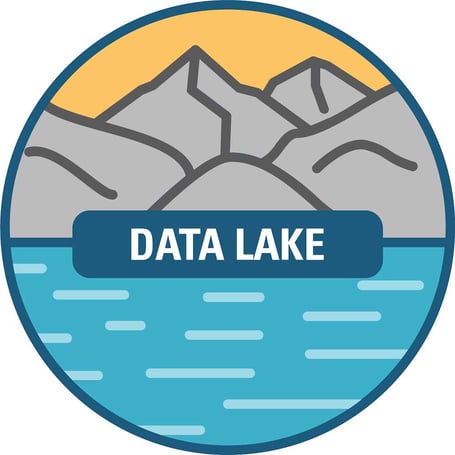An Introduction to Data Lakes for Public Safety and Justice Organizations
Posted on October 29, 2021 by Jim Pingel
Imagine that you're a fisherman, and you need to catch a large volume and wide variety of fish. Now imagine that the fish scatter amongst numerous rivers and streams, a situation that makes your task far more time-consuming and difficult. Moreover, you risk missing some types of fish you need to catch to fulfill your mission, either because you can't find them or you run out of time.
This metaphor describes the environment in which public safety and justice organizations are working today. Many systems exist that generate or store information vital to investigators, prosecutors, judges, and corrections officials. However, many are unable to access the information when they need to do so. That's because siloes exist in these systems, making it incredibly challenging for the individual entities that comprise the public safety and justice ecosystem — the 911 community, law enforcement, prosecutors, the courts, and jails/prisons — to exchange data. Siloed systems are analogous to the rivers and streams in our metaphor.
Now let's take the metaphor a bit further. What if a single lake contained all of the fish that the fisherman needed to catch? And what if the fisherman could sift through the different types of fish quickly and easily to find what he needed? MCP is working on the equivalent of that scenario for the public safety and justice ecosystem.The DataScape solution from MCP accomplishes this need.
DataScape essentially is a data lake specially created for the public-safety/justice ecosystem using MCP's unique expertise.
What Is a Data Lake?
A data lake is a storage repository capable of storing large data sets from various formats and structures. MCP's DataScape brings together native data from multiple sources into the data lake and provides a whole platform of tools for users to interact with the data easily. This user interaction includes a search engine, custom dashboard functionality for visualizing the data, and analytics. Then the machine-learning aspects of the solution build and refine models of the relationships in the unstructured data, presenting analysts with probabilistic results, and helping decision-makers "connect the dots" based on the newly aggregated and contextualized data.
 Then the artificial intelligence aspect —the conceptual result of the machine-learning activity — kicks in to supplement human intelligence.
Then the artificial intelligence aspect —the conceptual result of the machine-learning activity — kicks in to supplement human intelligence.
- Dashboards enable officials to visualize what the aggregated and contextualized data means via graphical elements.
- Alerts are generated based on parameters set by the organization.
- Data continuously flows into DataScape, and when it does, the previously built models are immediately updated through machine-learning technologies to reflect new patterns, anomalies, and relationships that emerged.
The result is enhanced intelligence and situational awareness, as well as better-informed decision-making.
Enabling Predictive Analytics
DataScape also makes predictive analytics possible. While enhanced emergency response driven by more and better data is a goal worth pursuing, an arguably more important goal is preventing emergencies, which becomes possible via predictive analytics.
Agencies across the county need to enhance data integration from agencies, particularly law enforcement agencies. One of their fundamental needs is the ability to share law-enforcement data to improve workflows and efficiencies bidirectionally. This need is very typical of what we hear regarding data integration in the public safety and justice ecosystem —the more seamlessly organizations can make sense of native data, the better.
MCP's DataScape solution has the ability to:
- Integrate multiple systems to capture structured and unstructured data. Everything from video, photos, audio, documents, and relational databases can be streamed to and stored in DataScape.
- Access and search data captured from all integrated, external, or federated sources and store it in a central repository.
- Compile and analyze data to better inform decision-making
- Compile and analyze data for statistical purposes and to develop and assess the effectiveness of crime-prevention strategies
- Update data sets in real-time or near real-time
- Stream data feeds in real-time or near real-time, without increasing data-storage requirements.
- Expunge data in real-time or near real-time as required
- Scale the infrastructure to accommodate data of any type or size
Public safety and justice agencies can use this solution to integrate the following:
- Records management system
- Jail management system
- Fire records management system
- External databases, e.g., evidence, incident reports
- Body-worn and mobile video metadata
- Computer-aided dispatch incident data
- DNA database indexes
- Automatic license plate reader system
- Third-party traffic data
We would love to talk with you about your data integration needs and how we would develop an approach, leveraging our solutions suite to meet them to enable your agency to fulfill its mission better — please reach out.
Topics: Law Enforcement, Data Integration and Analytics, Criminal Justice, 911 and Emergency Communications Centers, Workflow Automation


